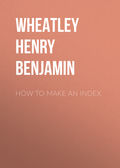
Wheatley Henry Benjamin
Samuel Pepys and the World He Lived In
CHAPTER XII.
AMUSEMENTS
“The shows of things are better than themselves,
How doth it stir this airy part of us
To hear our poets tell imagin’d fights,
And the strange blows that feigned courage gives.”
The Tragedy of Nero.
IN dealing with the amusements of Pepys’s day, we find how pre-eminent a position the theatre held in popular esteem. The presentation of a new play was looked upon as an event of the greatest moment, and the various appearances of favourite actors were chronicled in the “Diary” with considerable regularity.
Immediately after the Restoration, two companies of actors were organized, who acted at two different houses: one theatre was known as the King’s house, and the other as the Duke’s house. Sir William Davenant obtained a patent for his company under the name of “The Duke’s servants,” and as he had succeeded during the Commonwealth in performing certain dramatic pieces under cover of a musical accompaniment, his theatre was sometimes known as “The Opera.” A patent for “The King’s servants” was granted to Tom Killigrew, whose house was for distinction’s sake called “The Theatre.” Pepys has registered as many as 145 plays which he saw acted, some of them several times over, and there is every reason to believe that he saw many more during the period over which the “Diary” extends, that he has omitted to mention.361 When the theatres were first opened, the old plays were revived until the living dramatists had time to produce new ones, but several of the old masterpieces held their ground for many years. Among the revived dramatists were Marlowe, Shakespeare, Ben Jonson, Beaumont and Fletcher, Ford, Massinger, and Shirley. In the whole of Evelyn’s “Diary,” Hamlet is the only play of Shakespeare which the author mentions as having seen acted, and his observation upon this is that “now the old plays begin to disgust this refined age, since his Majesty’s been so long abroad.”362 Yet, in the one month of December, 1660, Pepys had seen two distinct plays of Shakespeare, and after the date of Evelyn’s entry, he saw Henry IV., Hamlet, Twelfth Night, Merry Wives, Romeo and Juliet, Midsummer Night’s Dream, Henry VIII., Macbeth, Othello, Taming of a Shrew, and Tempest, which proves that Shakespeare was more generally appreciated than is usually supposed. Here we have eleven plays, which is the largest number of plays by one dramatist, with the exception of Fletcher, whose separate productions and joint ones with Beaumont number as many as twenty-four. Shirley comes next with nine, then Ben Jonson with five, Ford with two, and Massinger with the same number. We have already seen how little Pepys appreciated Shakespeare’s genius, but it seems as if he could not enough express his delight in the plays of Ben Jonson. He describes the “Alchymist” as “a most incomparable play,”363 and the “Silent Woman” as “the best comedy, I think, that ever was wrote;”364 of “Every Man in His Humour,” he writes, “wherein is the greatest propriety of speech that ever I read in my life.”
Although some of the actors had gained experience on the stage of Charles I.’s reign, most of them were novices, and it is therefore remarkable to find such an array of talent at both houses.
Most of the old players were attached to the King’s company. Hart, Mohun, and Burt were all fine actors, and they had acted female parts before the suppression of the theatre, but Betterton, one of the greatest actors that ever lived, was a host in himself and the mainstay of the Duke’s house. Pepys was never tired of lauding his powers, and delighted in seeing him act. His Hamlet was “beyond imagination,”365 and his Henry V. “incomparable.”366 Mrs. Knipp was one of those actresses of whom little or nothing is known outside the “Diary,” but who makes a considerable figure there. Pepys was very partial to this free-and-easy lady, and when we read of his behaviour to her we need not be surprised to find Mr. Knipp alluded to as a “jealous-looking fellow.”367 This is the place to expose a cruel slander against a worthy man, which Pepys has embalmed in his pages and which has not been corrected by the editors. Pepys having occasion to mention Anne and Beck Marshall, the well-known actresses, he sets down that Mrs. Pierce told him how they were the daughters of Stephen Marshall, the great Presbyterian, and then reports Nell Gwyn’s often-quoted speech to Beck as to the difference in the education of the two; the latter being “a Presbyter’s praying daughter.”368 With such an authority it is not surprising that Lord Braybrooke should reproduce the statement in a note to another passage,369 but on investigation the whole bubble bursts. Stephen Marshall died on the 19th of November, 1655, and was buried in Westminster Abbey. At the date of his will his wife was dead, and five of his daughters were already married, three of them at least to clergymen. The remaining daughter, Susan, who was unmarried, must have been more than twenty-one years of age at the time of her father’s death, as she proved his will. These important facts were discovered by Colonel Chester, and set forth in his remarkable volume, “Westminster Abbey Registers.” It did not concern the Colonel to discover the parents of Anne and Rebecca, but he proved very conclusively that they were not the children of the Rev. Stephen Marshall. Another blunder is made in the “Memoirs of Count Grammont,” where “Roxolana” in Davenant’s “Siege of Rhodes,” is confused with “Roxana” in Lee’s “Rival Queens,” and in the notes it is inferred that one of these Mrs. Marshalls was seduced by Aubrey de Vere, last Earl of Oxford, of that name. The “Roxolana” who was deceived by Lord Oxford with a false marriage, was Elizabeth (or Frances) Davenport, who is frequently mentioned by Pepys.
At the revival of the stage after the Restoration, a more lavish expenditure on scenery and dresses became common. Pepys tells us that when Ben Jonson’s “Catiline” was acted at the King’s House, Charles II. gave the actors £500 for robes which were required.370 We also learn that “the gallants do begin to be tired with the vanity and pride of the theatre actors, who are indeed grown very proud and rich.”371 But a few years afterwards, when Pepys stepped up to Harris’s dressing-room after the play, he observed “much company come to him and the wits, to talk and to assign meetings.”372 When Kynaston was beaten by Sir Charles Sedley for imitating him, the manager of the King’s theatre was forced to read Kynaston’s part in “The Heiress,” much to the disadvantage of the vraisemblance of the play. Pepys writes, “but it was pleasant to see Beeston come in with others supposing it to be dark, and yet he is forced to read his part by the light of candles, and this I observing to a gentleman that sat by me, he was mightily pleased therewith, and spread it up and down.”373 Pepys had occasional talks with Tom Killigrew on the state of the stage, and heard from him of the scheme for setting up a nursery of young actors in Moorfields, where plays should be acted; “but four operas it shall have in the year, to act six weeks at a time; where we shall have the best scenes and machines, the best music and everything as magnificent as in Christendom.” For this purpose Killigrew “sent for voices and painters and other persons from Italy,”374 but all this fine project came to naught, and two years afterwards he explained to Pepys all that he had done for the theatre and what he proposed still to do. He said “that the stage is now by his pains a thousand times better and more glorious than ever heretofore. Now wax-candles and many of them; then not above 3 lbs. of tallow: now all things civil, no rudeness anywhere; then, as in a bear-garden: then, two or three fiddlers; now, nine or ten of the best: then, nothing but rushes upon the ground, and everything else mean; now, all otherwise: then, the Queen seldom, and the King never would come; now, not the King only for state, but all civil people do think they may come as well as any.”375
The theatres were open in the afternoon, three o’clock being the usual hour for performance, and the plays were therefore acted by daylight during the summer. The roof consisted of skylights made of thin glass, which let the wet into the pit in times of heavy rain. Pepys felt the inconvenience on one occasion, and he wrote: “Before the play was done it fell such a storm of hail, that we in the middle of the pit were fain to rise, and all the house in a disorder.”376 A few years after this the very same inconvenience was experienced. “A disorder in the pit by its raining in from the cupola at top,” and this must often have happened.377
When plays were acted at court, the performances took place at night, probably because the actors were then free after acting at the theatres. Sometimes even the King had to wait, as we read, “after all staying above an hour for the players, the King and all waiting, which was absurd, saw ‘Henry V.’ well done by the Duke’s people, and in most excellent habits, all new vests, being put on but this night.... The play continued till twelve at night.”378
It is here necessary to guard readers of the “Diary” against a mistake very easily fallen into in respect to the various theatres, as the editors have given no explanation to guide them. Davenant’s, or the Duke’s, company occupied the old “Cockpit” in Drury Lane for a short time after the Restoration, until they removed to Lincoln’s Inn Fields, in the spring of 1662. Now Pepys frequently mentions the plays acted at the Cockpit, but these were performed at night, and apparently the Cockpit alluded to was the one at Whitehall, not that in Drury Lane. This seems evident by an entry under date Nov. 20, 1660: “I found my Lord in bed late, he having been with the King, Queen and Princess at the Cockpit all night, where General Monk treated them; and after supper a play;” because the Duke of Albemarle lived at the Cockpit in St. James’s Park. Peter Cunningham mentions in the “Handbook of London,” that he found in the records of the Audit Office a payment of xxxli. per annum, “to the Keeper of our playhouse called the Cockpitt, in St. James’s Park,” but he gives no further particulars and does not appear to have noticed how far the entries in the “Diary” illustrate this appointment. On December 1st, 1662, the Duke’s company acted before the King at the Cockpit, and January 5th, 1662–63, the King’s company acted in the same place, but Pepys did not think the latter at all equal to “the Duke’s people.”
All the entries in the “Diary” relating to the stage require more investigation than they have yet received, as the notes of the editors are quite insufficient. We have seen how the allusions to the “Cockpit” in the years 1660–62, might either refer to the Duke’s theatre or to the Court theatre, and the same confusion might easily be made in respect to the Lincoln’s Inn theatre. Pepys says that on November 20th, 1660, he and Mr. Shepley went “to the new play-house near Lincoln’s Inn Fields (which was formerly Gibbon’s tennis-court).” This was the home of the King’s company from 1660 till 1663, when they went to Drury Lane. As already stated, the Duke’s company removed to Portugal Street in 1662, so that for a short period the two rival theatres were close together in the neighbourhood of Lincoln’s Inn Fields. Pepys visited all parts of the house, and did not much care where he sat so that he got in: thus on November 7, 1667, he was “forced to sit in the side balcony over against the music-room, close by my Lady Dorset and a great many great ones;” and some years before he was somewhat troubled to be seen by two or three of his clerks, who were in the half-crown box, while he was in an eighteenpenny place.379 The price of a pit seat was 2s. 6d., and in spite of the inconvenience of the place in wet weather, it was frequented by people of fashion; for instance, the Duke of Buckingham sat there, and was surrounded by Lord Buckhurst, Sir Charles Sedley, Sir George Etherege, and other poets;380 and “a company of fine ladies” was not absent.381 But even at that time “citizens, ’prentices and others” jostled their betters. Pepys writes: “I do not remember that I saw so many, by half, of the ordinary ’prentices and mean people in the pit at 2s. 6d. apiece as now; I going for several years no higher than the 12d. and then the 18d. places, though I strained hard to go in when I did.”382 The theatres were generally crowded, and on special occasions it was difficult to find a place. When Etherege’s “She Would if She Could” was first acted, 1,000 persons were turned away because there was no room in the pit an hour before the performance commenced.383 An ingenious plan for keeping seats which was in vogue for many subsequent years is mentioned by Pepys. On May 2, 1668, he writes: “To the Duke of York’s play house at a little past twelve, to get a good place in the pit for the new play, and there setting a poor man to keep my place, I out and spent an hour at Martin’s, my bookseller’s, and so back again, where I find the house quite full. But I had my place.”
When the theatre built for the King’s company in Drury Lane, was opened in 1663, Pepys found some faults in the construction, one of these being the narrowness of the passages in and out of the pit. He did not approve also of the placing of the orchestra under the stage, by which means the basses could not be heard at all, and the trebles very faintly.384
Pepys does not mention Fop’s Corner in the King’s theatre, a name which recalls the better-known Fop’s Alley of Her Majesty’s Opera House, but it is alluded to in Dryden’s epilogue spoken at the new house in Drury Lane on March 26th, 1674:
“So may Fop Corner full of noise remain,
And drive far off the dull attentive train.”
Pepys does, however, tell us how loudly people of fashion talked. One day Sir Charles Sedley had a merry discourse with two ladies, which prevented the Diarist from hearing any of the play. His feelings were divided between pleasure in hearing the wit and annoyance in losing the play.385 The manners of most of the audience, as exhibited in several little traits, were far from commendable, but it would be difficult to equal the following incident, which is related as if there were nothing particularly unladylike in it: “I sitting behind in a dark place [in the theatre], a lady spit backward upon me by mistake, not seeing me, but after seeing her to be a very pretty lady, I was not troubled at it at all.”386
One of the institutions of the theatre was Orange Moll, who is frequently mentioned in the “Diary.” The orange girls stood with their backs to the stage, and the beaux in the pit broke jests with them. One of these women tried to impose upon Pepys by affirming that she had delivered a dozen oranges to some ladies in a box in accordance to his order, “which was wholly untrue, but yet she swore it to be true.” He denied the charge, and would not pay, but for quiet bought four shillings’ worth of oranges at 6d. apiece.387 This was the usual price, as we learn from the prologue to Mrs. Behn’s “Young King,” 1698:—
“Half crown my play, sixpence my orange cost.”
The mistress or superior of these women was named, for distinction, Orange Moll.
Pepys makes a passing allusion to the old practice of placing the notices of performances on posts, but the editors have left the passage without explanation. He writes: “I went to see if any play was acted, and I found none upon the post, it being Passion week.”388 This is well illustrated by an anecdote:—“Master Field, the player, riding up Fleet Street a great pace, a gentleman called him, and asked what play was played that day? He (being angry to be stayed upon so frivolous a demand) answered that he might see what play was to be played upon every post. I cry you mercy (said the gentleman) I took you for a post you rode so fast.”
The other amusements mentioned by Pepys sink into insignificance by the side of the theatre, but a short enumeration of some of them may be given here. The cock-pit, in Shoe Lane, was a well-known place of resort for sporting men, and Pepys went to see some cock-fighting there, but he soon had enough of it, although he was glad to have seen “the strange variety of people.”389 He went on one occasion to the Bear Garden, on the Bankside, “and saw some good sport of the bull’s tossing of the dogs: one into the very boxes,” but he did not much like the company, and on the whole he thought it “a very rude and nasty pleasure.”390 At another time he went to the same place to see a prize fight, but being ashamed to be seen, he went in a back way (getting among the bulls, and fearing to be too near the bears) and sat with his cloak before his face.391
Pepys did not practise athletic sports himself, but he liked to see them practised by others. He was a spectator at a very serious fencing-match where the combatants cut each other rather severely both in the head and legs.392 The King was a good player at tennis, but Pepys thought it “a loathsome sight” to see his play “extolled without any cause at all.”393 Charles was in the habit of weighing himself before and after a game, and on a certain occasion he lost four and a-half pounds. The best players in England were said to be Prince Rupert, Bab May, Captain Cooke, and Mr. (afterwards Sir Thomas) Chicheley.394 Pepys liked a game of bowls, because he could play it with the ladies;395 and he sometimes condescended to have a game at ninepins.396 Gaming ran high at Court, and we are told that Lady Castlemaine played £1,000 and £1,500 at a cast, winning £15,000 one night, and losing £25,000 on another night.397 No wonder Bishop Morley denounced this excess in play, and specially commented on the groom-porter’s conduct in one of his sermons before the Court.398
There are several references in the “Diary” to games of cards, but in most instances the particular game played is not mentioned. Cribbage, handycap (a game like loo), and gleek (played by three persons with forty-four cards), are, however, all specially alluded to.399
Pepys played at shuttlecock on January 11th, 1659–60; at shuffle (or shovel) board on July 30th, 1662, and on April 1st, 1665, and at tables or backgammon on September 11th and 16th, 1665. Among the minor amusements must be mentioned the crying of forfeits,400 blindman’s buff,401 and crambo or tagging of rhymes.402
Dancing was in high repute, and Pepys describes the various balls pretty fully. On the 31st of December, 1662, there is some lively dancing at Whitehall. The King (a good dancer) opens the ball with the Duchess of York, and the dancing commences with the Bransle or “brawl,” of Shakespeare and Gray. Then follows the swift coranto, and the country dances. When the King stood up, all the ladies, even the Queen herself, rose. A few years later a gallant company again meet at the palace, and the same order of proceeding is followed. First comes the brawl, then the coranto, and last of all a dance from France, which the King calls the “new dance.”403
Pepys learns the coranto himself in May, 1663, and two years afterwards he disputes with Captain Taylor on the best way of dancing it.404 At first Pepys’s Puritan leanings led him to look rather unfavourably upon dancing, but in the end he became tolerably fond of it. On January 6th, 1667–68, he had a party for which he engaged four fiddlers at a cost of £3, and everything went off very satisfactorily in consequence. All that Pepys has to say about amusements is to be found in the “Diary,” for his letters contain no information respecting the stage or the balls at Court. This is only another indication of how much we have lost by the discontinuance of the “Diary,” for it is scarcely possible to believe that the man who exhibited so absorbing an interest in the proceedings of the theatre, should suddenly have ceased to visit it.
CHAPTER XIII.
CONCLUSION
“Let us hear the conclusion of the whole matter.”
Ecclesiastes xii. 13.
NOW that all the divisions of our subject have been discussed, there is little to add in a concluding chapter. We have seen Pepys in his poverty, when he and his wife struggled to keep up a decent appearance with an empty larder and a fireless grate at home. We have seen the sudden change, when he became rich and increased his expenses with an ever-present sense of the effect of his movements upon the outer world. And, lastly, we have seen how he lived to an honoured old age, and passed out of life as a worthy example of virtue and honour. We have peeped into some of his dearly-loved books, and seen how the “Bibliotheca Pepysiana” helps to illustrate the character of its founder.
Having thus looked at the man as he lived, we passed on to his surroundings. First, we dealt with the town he loved and knew so well, then made the acquaintance of the relations and friends that surrounded him, and lastly, tried to understand the arrangements of the office where he spent so large a portion of his life. This was the inner circle. The frequenters of the Court and the public characters with whom he came into occasional contact or knew only from observation at a distance, formed the outer circle of his life.
Byron, in allusion to the question, “Where is the world?” asked by Dr. Young at the age of eighty, cried out:—
“Alas!
Where is the world of eight years past? ’Twas there—
I look for it—’tis gone, a globe of glass
Crack’d, shiver’d, vanish’d, scarcely gazed on, ere
A silent change dissolves the glittering mass.
Statesmen, Chiefs, Orators, Queens, Patriots, Kings,
And Dandies, all are gone on the wind’s wings.”
Yet we may point to the pages of Pepys’s “Diary,” and say that there the globe is still whole, and that there men and women of nearly three times eighty years ago live and move before our eyes.
In taking leave of the official, the gossip, the musician, and the man of letters, I can only express the hope that these pages may be found a useful companion to one of the most interesting books in the English language.






